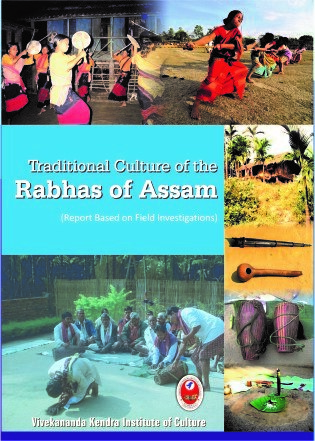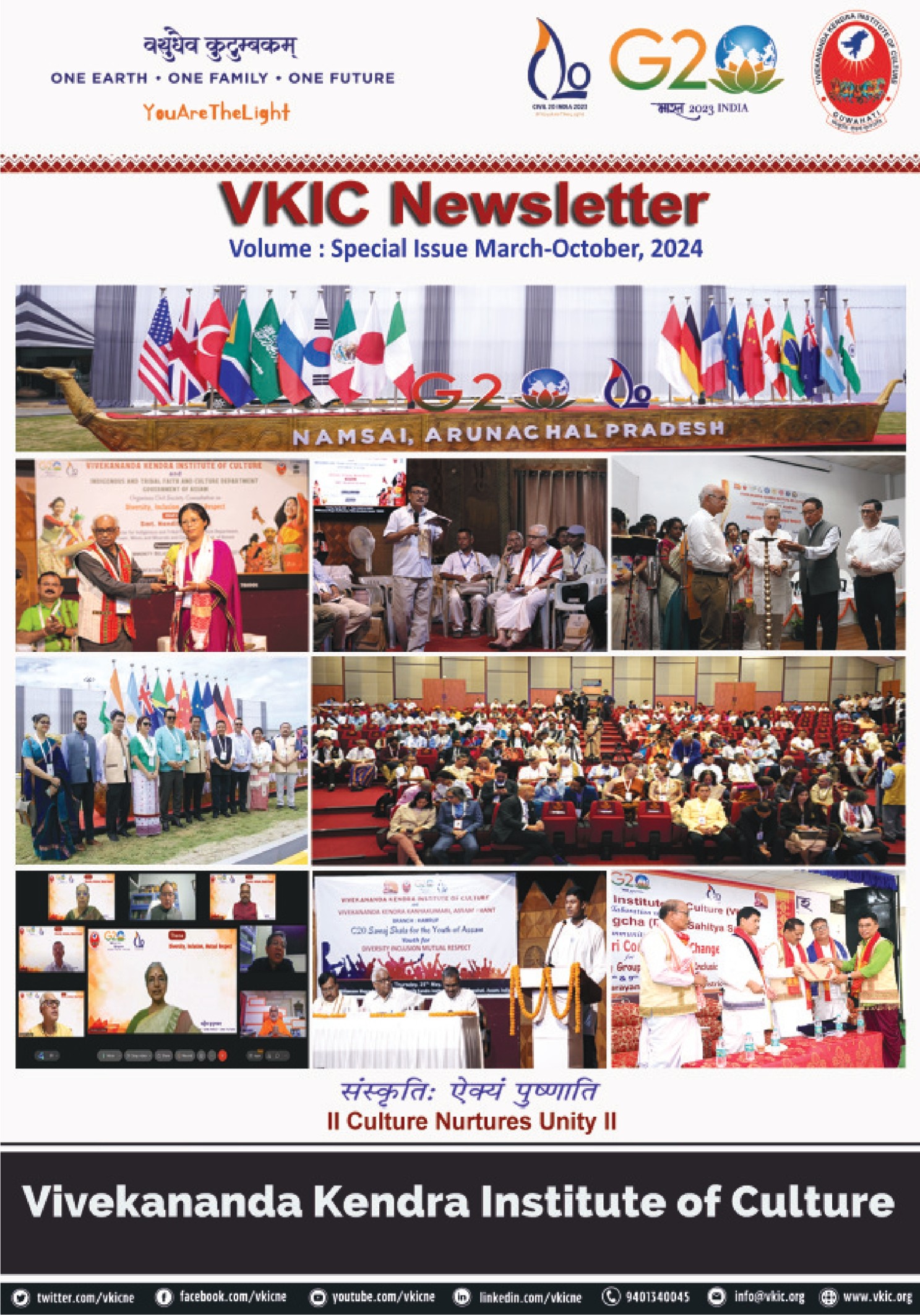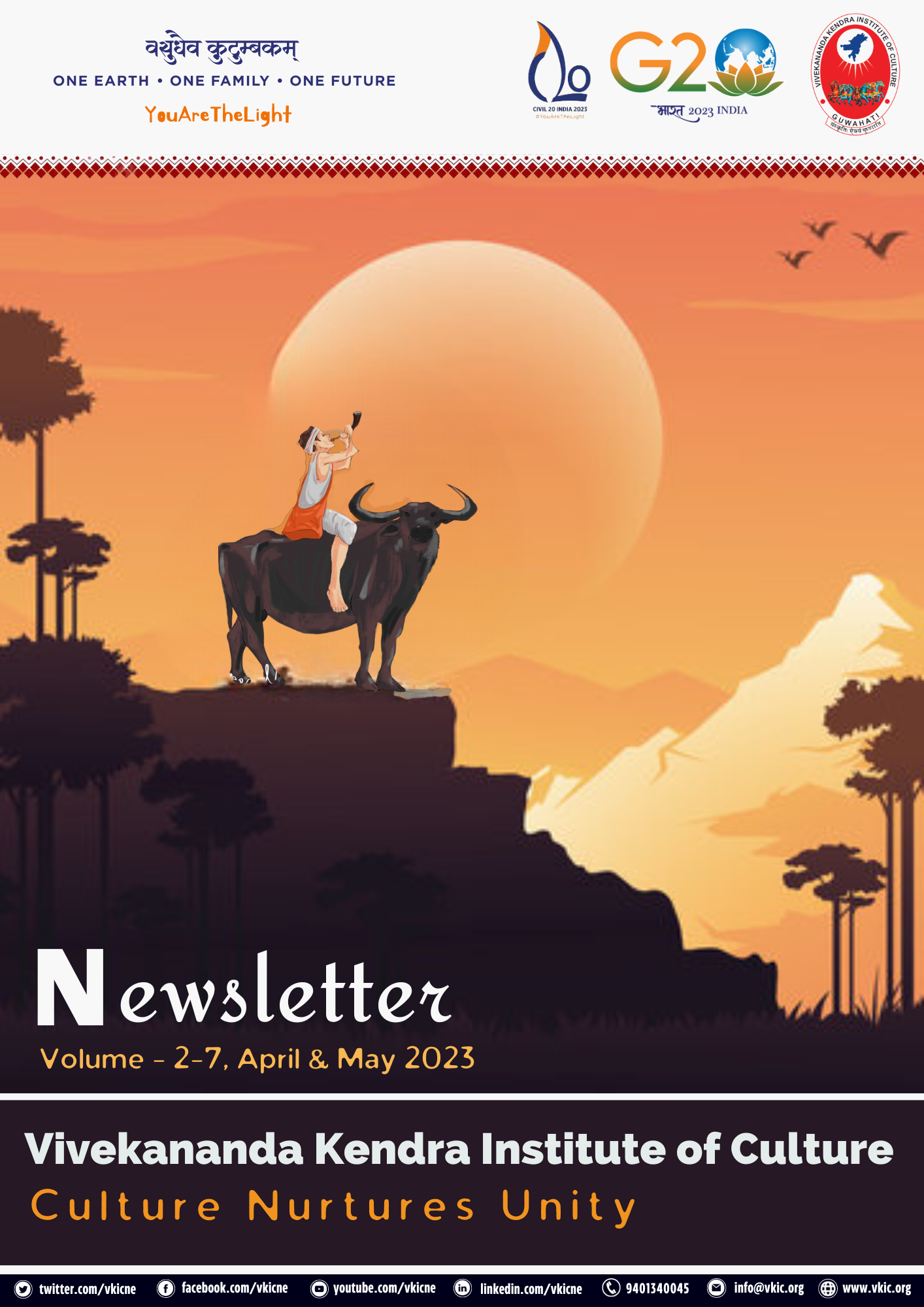 Book Title: Traditional Culture of the Rabhas of Assam
Book Title: Traditional Culture of the Rabhas of Assam
[ Report based on Field Investigations ]
Number of papers: 5
Publishing Year: 2014
Book Summary by: Kum. Kaberi Deb, Research Associate, VKIC
The book Traditional Culture of the Rabhas of Assam is a documentation of the project on the Rabha community during the period 2008-2010 with the approval of the Ministry of Culture Government of India. The book is the outcome of the extensive fieldwork done mainly in the Goalpara District of Assam, where much of the population of the community are concentrated. The book was later reviewed by Dr. Birendranath Datta, Retd. Professor, Department of Folklore Gauhati University and Birinchi Kumar Medhi, Retd. Professor Department of Anthropology.
The book contains five chapters, where most of the important aspects of the community are identified and are broadly classified. Concepts such as migration, marriage, language, descent and inheritance, rites and rituals etc are mentioned widely in the book.
The Rabhas are one of the major indigenous inhabitants of Assam and Northeast India in general. They are mainly spread over the districts of Goalpara ,Kamrup and Darrang and also in the areas adjoining Meghalaya ,West Bengal and Bangladesh. They have several Sub-Tribes and despite being scattered in separate groups of villages; they maintain a certain level of homogeneity in their sociocultural order.
The Rabhas try to establish ethnic affinities scientifically; accordingly, the Mongoloids came in regular waves from the Tibetan north and northeast and absorbed the culture of the local Australoids to form the communities such as the Rabhas and the Garos. The Rabhas became more allied with the Garos then any other Boro group. The Rabha ballads and hearsays do not contain any dependable history except points to ponder about the route of their migration from the north.
Various scholars have identified around five to seven sub-tribes, these are Rongdaniya,Maitori, Pati, Koch, Bitalia, Dahuriya and Sangha out of which Rongdaniya, Maitori and the Pati are the dominant ones. Presently the sub-tribes of Rabhas include Rangdani, Pati, Maitori, Totla, Bitalia & Sangha. Pati Rabha subgroup is Hinduised and the impact of accularation [what does this mean?] is prominent amongst them. They are located on the southern bank of the River Brahmaputra in the belt stretching from Guwahati to Dudhnoi. The Maitori, on the other hand, are more akin to the Garos in their habits and customs. They are though concentrated mainly in the western Meghalaya, are distributed in the Pancharatna area of Goalpara district.The Rangdani Rabhas are commonly found in the Western Goalpara district.
The belief system of the community is mainly Animistic in nature. They believe in spirits, both malevolent & benevolent. In recent times many Rabha community people have started believing in Hindu gods and goddesses & followers of Mahapurusia sect of Vaishnavite faith. On the other hand, the conversion into Christianity has been recently seen in the Rabha community.
Rabhas are the admirers of festivity. Main festivals of them are classified in three categories: seasonal festivals that are related to magico religious rites, regional or restricted festivals. Whereas their main festival is Baikho. There are two ways of organizing rituals one in the Rabha language following Rabha tradition called as Rabha Bai by singing hymns (han ggarkai) and another in the Aryan language with Hindu way of rites known as Lema Bay (Lema means the Assamese people and Bay means God). In the former type pig and fowl were used as sacrificial animals which are considered taboo in Vedic rites, while in the latter case the items of sacrifice used are only duck and goat. The other name for Lema bay is also called khetar puja.
While the Rabhas can be differentiated in a lot of areas and its origin as a community, this community has assimilated with the Assamese community in a broader perspective.
For eg. The Pera hasu puja is similar to gorokhiya puja, done to regain lost cattle and well-being of the cowherd.
Mamebebakai or Rontak : The festival is similar in celebration to lakhi puja or the worship of the hindu goddess of prosperity and is observed during the months of Phalgun and Chaitra through puja. The festival usually precedes the sowing of seeds in the fields
A peculiar feature of all social events of the Rabha is that, whether it is a funeral rite, a puja or a festival, it must end with dance and music. It was observed during the celebration of Baikho festival too. An interesting anecdote of the youth participation in Baikho festival was that during this time the young boys and girls elope after the celebration and subsequently start a conjugal life. This system is also known to be present among some communities of Assam during the Bihu Festival.
The main aim behind this field work was to collect lesser-known information about this widespread community that will serve the needs of the present generation and the other generations to come, thus helping towards the baseline studies for the future.


